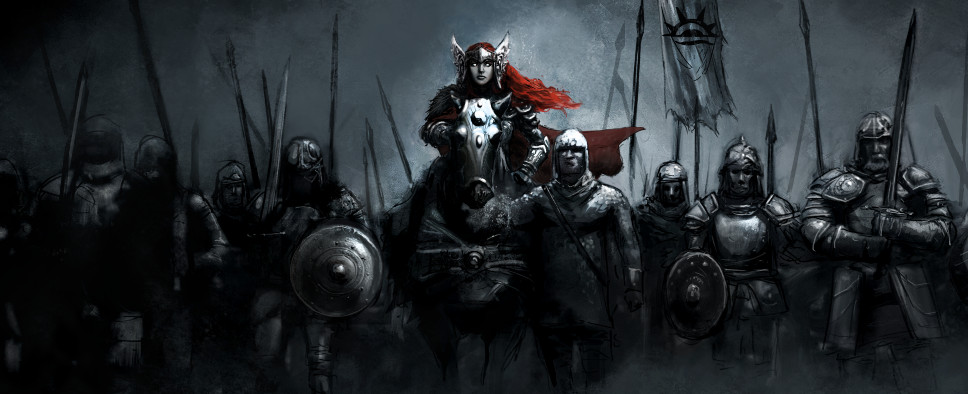Baldur's Gate: Siege of Dragonspear Gameplay Footage
-
Category: News ArchiveHits: 2518

Beamdog writer Amber Scott and lead designer Phillip Daigle have shown off another hour or so of gameplay from the Siege of Dragonspear expansion to Baldur's Gate: Enhanced Edition on livestream, a recording of which was later uploaded on YouTube (you can find it embedded below in the newspost). The livestream, which showcased an optional dungeon off the critical path, also included brief cameos from company CEO Trent Oster and new creative director David Gaider.
The dungeon shown during the livestream seemed to offer a good amount of content, with varied (but not overly complex or gimmicky) combat encounters, some puzzles, dialogue, and nooks and crannies to explore. By the end, Scott's party had been completely obliterated, although that seems to have happened partly because she was distracted and didn't have the chance to focus completely on the game. I have to reiterate that I'm very impressed by the quality of the area art, especially when compared to the new areas Beamdog had implemented in Baldur's Gate: Enhanced Edition. The jump in quality is enormous, not least because the developers implemented a number of new visual effects like colored fog.
Aside from the gameplay, the livestream is also notable because of the developers' willingness to talk about the new features that are going into the expansion and their own design process and considerations. We are promised, for example, more depth from the returning companions from Baldur's Gate, who will now have more lines and more complex personalities that go beyond their original superficial characterization. Some of these companions were also revised in terms of stats, so that they are more "functional" in terms of gameplay.
The companion lines are just a small part of the roughly 500,000 lines of text the writing team at Beamdog penned for the game, of which 8000 are voiced, some of which were penned for totally new companions like M'Khiin, a shaman goblin. To design the new class, the developers at Beamdog looked at very old iterations of the idea in the very first Dungeons & Dragons editions and much more recent titles such as Blizzard's RTS Starcraft 2.
New, more flexible AI scripts have also introduced to control the game's companions or, should the players prefer, a party of custom characters. While originally Baldur's Gate and its sequel only allowed custom parties for multiplayer games, Siege of Dragonspear will introduce the full party creation from Icewind Dale to the game's single-player mode, a change that will be backported to both Baldur's Gate: Enhanced Edition and Baldur's Gate II: Enhanced Edition. Multiplayer games could technically be launched by a single player, so this is really more of an ease of use feature.
According to Daigle, a lot of the expansion has an "Icewind Dale" feel in terms of enemy spawns and combat mechanics, but the influence of Black Isle's dungeon crawl in the frozen north didn't stop there, as some enemy types from it were also featured. Being an expansion that's meant to bridge the gap between the original Baldur's Gate and Shadows of Amn, it's not surprising to learn that the developers also looked at some of the tricks used in the sequel. Siege of Dragonspear will feature dream sequences in the mold of Baldur's Gate II rather than the original, complete with in-game graphics and dialogue choices. Furthermore, the developers have also implemented some cutscenes from the perspective of other characters, much like the cutscenes that would follow Irenicus' exploits.
Finally, it's worth noting that the team confirmed that a release date for the expansion has been decided, and that now they're just figuring out when it's the right time to announce it. They recommended following the company's social media advice, though I'd imagine the announcement will be difficult to miss when it happens. For the future, though, we should expect a shorter turnaround between announcement and release, as Beamdog feels Siege of Dragonspear was revealed too early. The expansion has been in development for four years (although only two of full production), but it looks like we won't have to wait much longer.

